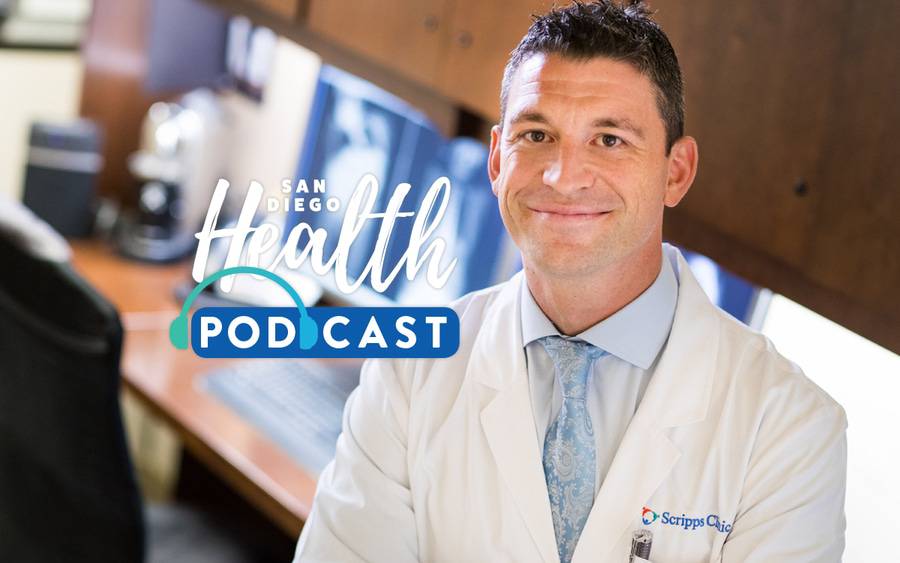Can Scoliosis Be Fixed? (podcast)
Treatment for spine condition differs between children and adults

Dr. Gregory Mundis, Orthopedics, Scripps Clinic
Treatment for spine condition differs between children and adults
Every person’s spine curves to a certain degree, but for some, that curve becomes too prominent, and they develop a condition called scoliosis.
Scoliosis is usually found in adolescents, and though it is less common, can also present in adults in their 40s through 60s. There’s no way to prevent scoliosis from developing, but doctors do have several ways to treat it ranging from acupuncture and physical therapy to nerve blockers and surgery.
In this episode of San Diego Health, host Susan Taylor and guest Gregory Mundis, MD, an orthopedic surgeon who specializes in scoliosis at Scripps Clinic Torrey Pines, discuss scoliosis symptoms, how it’s diagnosed, and treatment options. Dr. Mundis also outlines scoliosis’ likely causes and who’s most at risk.
Listen to the episode on the signs and treatments for scoliosis
Listen to the episode on the signs and treatments for scoliosis
Podcast highlights
Lightly edited for clarity.
Watch the video on scoliosis
Watch the San Diego Health video with host Susan Taylor and Dr. Mundis discussing symptoms and treatments for scoliosis.